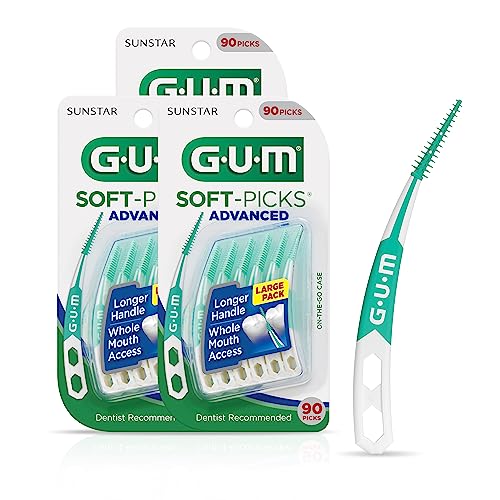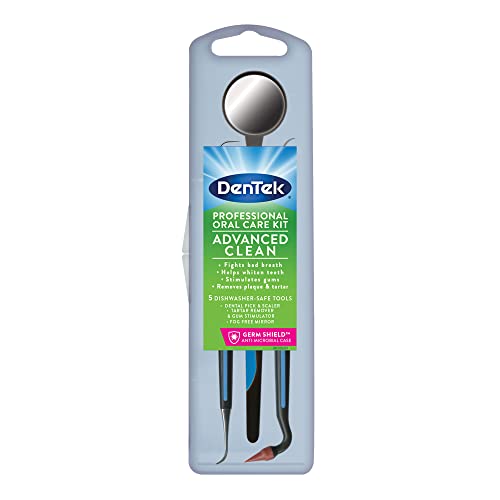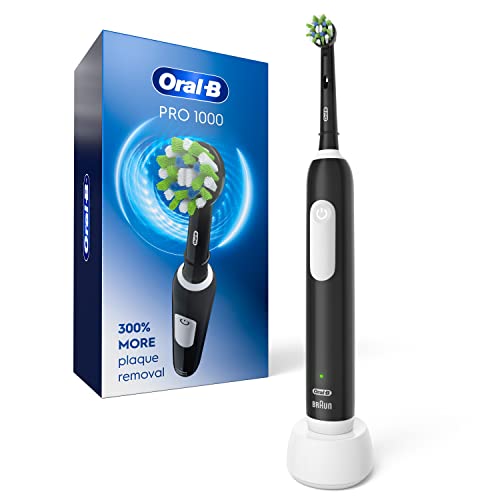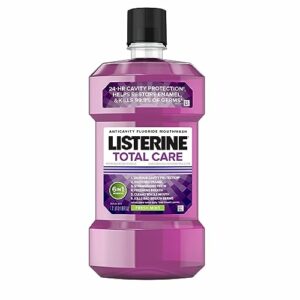In our step-by-step guide titled “How to get rid of bad breath?”, we aim to help you tackle the common problem of bad breath. We understand how this issue can affect your confidence and social interactions, so we have created this guide to provide you with practical tips and remedies to combat bad breath effectively.
Top-rated products for healthy smiles
Identify the cause
To determine the underlying cause of your bad breath, carefully evaluate your oral hygiene practices. Ensure that you are brushing and flossing your teeth thoroughly and regularly. Additionally, check for symptoms of gum disease, such as red, swollen gums or bleeding while brushing. If you have a dry mouth, try drinking more water and avoiding tobacco and alcohol. Finally, consider any medical conditions that may contribute to bad breath, such as sinus infections or gastrointestinal issues.
Improve oral hygiene
To improve your oral hygiene, brush your teeth at least twice a day using a soft-bristled toothbrush and fluoride toothpaste. Start by placing the toothbrush at a 45-degree angle to your gum line and gently brush in circular motions for two minutes. Remember to clean all surfaces of your teeth, including the front, back, and chewing surfaces. After brushing, don’t forget to floss daily to remove plaque and food particles from between your teeth. Take a piece of floss, wrap it around your fingers, and slide it gently between each tooth, making sure to reach the gum line. Finally, use a mouthwash to rinse your mouth and remove any remaining bacteria that can cause bad breath. Swish the mouthwash around for 30 seconds, ensuring it reaches all areas of your mouth, and then spit it out. Incorporating these habits into your daily routine will help maintain your oral health and keep your breath fresh.
Clean your tongue
To clean your tongue, start by using a tongue scraper or your toothbrush. Gently scrape or brush the surface of your tongue from back to front, removing any bacteria that may have accumulated. Make sure to cover the entire surface of your tongue, including the sides. Rinse your mouth thoroughly with water after cleaning. For example, you can place the scraper or toothbrush at the back of your tongue and slowly move it forward, applying light pressure to remove any debris. Repeat this process a few times to ensure a thorough cleaning. Remember to rinse your mouth afterward to remove any remaining bacteria or debris.
Stay hydrated
Drink plenty of water throughout the day to keep your mouth moist and prevent dry mouth. Dry mouth can lead to bad breath, so it is important to stay hydrated. Make sure to take regular sips of water and aim to drink at least eight glasses a day.
Avoid certain foods and drinks
Limit your consumption of foods and drinks that can cause bad breath, such as garlic, onions, coffee, and alcohol. These items can leave a strong odor in your mouth that can linger for hours. Instead, choose foods and drinks that are less likely to cause bad breath, such as fresh fruits, vegetables, and water.
Quit smoking
If you smoke, quitting is a step towards improving your oral health. Smoking can contribute to bad breath and other oral health issues. To quit smoking, start by setting a quit date and making a plan. Seek support from friends, family, or a support group. Consider using nicotine replacement therapy or medication to help manage cravings. Stay committed and remind yourself of the benefits of quitting. Make necessary lifestyle changes, such as avoiding triggers or finding alternative activities to smoking. Stay patient and persistent, as quitting smoking is a process that takes time and effort.
Visit your dentist
Schedule regular dental check-ups to address any underlying dental issues and receive professional cleaning to maintain good oral health. These check-ups are crucial in detecting and treating any potential problems early on, preventing them from worsening and causing more discomfort or damage. To schedule an appointment, contact your dentist’s office and provide them with your preferred date and time, or inquire about their available slots.
Manage medical conditions
- If you are experiencing bad breath due to an underlying medical condition, we understand how frustrating it can be.
- We recommend consulting with your doctor to discuss your symptoms and develop a treatment plan tailored to your specific condition.
- Your doctor will be able to provide a comprehensive evaluation and guide you on the best course of action to address the root cause of your bad breath.
- For example, if your bad breath is a result of gastroesophageal reflux disease (GERD), your doctor may prescribe medications or recommend lifestyle changes to manage the condition and alleviate your symptoms.
- Remember to follow your doctor’s advice and maintain regular follow-up appointments to monitor your progress and make any necessary adjustments to your treatment plan.
Final thoughts and solutions
In conclusion, we have explored a comprehensive guide on how to get rid of bad breath. Throughout this post, we have stressed the significance of maintaining good oral hygiene practices, such as brushing and flossing daily. We have also highlighted the importance of scheduling regular dental visits to address any potential dental issues that may contribute to bad breath.
Furthermore, we have discussed the need to address underlying causes of bad breath, such as gum disease, dry mouth, or certain medical conditions. By identifying and treating these factors, we can effectively combat bad breath and improve our overall oral health.
Remember, the key to eliminating bad breath lies in a combination of consistent oral hygiene, professional dental care, and addressing any potential underlying causes. By implementing these practices into our daily routine, we can achieve fresh breath and maintain a healthy smile.
Simple Solutions
Step-by-Step Guide to Using Dental Care Products
- Start with a soft-bristle toothbrush: Use a soft-bristle toothbrush to gently brush your teeth in circular motions. Avoid using excessive force as it may damage your gums or tooth enamel
- Use fluoride toothpaste: Apply a pea-sized amount of fluoride toothpaste to your toothbrush. Fluoride helps to strengthen your tooth enamel and prevent tooth decay. Brush your teeth for at least two minutes, making sure to reach all surfaces
- Floss regularly: Flossing is an essential part of dental care. Take about 18 inches of dental floss and wrap it around your fingers, leaving a small section to work with. Gently slide the floss between your teeth, following the curve of each tooth. Be careful not to snap the floss, which can injure your gums. Repeat this process for each tooth
- Use mouthwash as directed: After brushing and flossing, rinse your mouth with an antimicrobial mouthwash. Follow the instructions on the bottle, typically by swishing the solution in your mouth for 30 to 60 seconds. Spit out the mouthwash and avoid eating or drinking for at least 30 minutes after use
- Replace your dental care products regularly: Toothbrushes should be replaced every three to four months or sooner if the bristles become frayed. Similarly, dental floss and mouthwash should be restocked regularly to maintain effectiveness
- Remember, practicing good oral hygiene is key to maintaining a healthy smile. If you have any concerns or questions, don’t hesitate to reach out to your dentist or dental hygienist
Frequently Asked Questions about Dental Care Products
What should we look for in a good toothbrush?
When looking for a good toothbrush, there are a few important factors to consider. First and foremost, we should look for a toothbrush with soft bristles. Soft bristles are gentle on our gums and teeth, reducing the risk of gum irritation and enamel erosion.
Additionally, we should choose a toothbrush with a comfortable handle that allows us to have a firm grip and easily maneuver it in our mouth. A toothbrush with a non-slip grip can be especially helpful, particularly for those with limited dexterity.
Another crucial aspect to consider is the size and shape of the toothbrush head. It should be small enough to reach all areas of our mouth, including the back teeth, and should have a shape that can effectively clean both the outer and inner surfaces of our teeth.
Furthermore, it is recommended to opt for a toothbrush with a replaceable head or one that should be replaced every three to four months. This ensures that we are using a toothbrush with bristles in good condition for effective cleaning.
Lastly, some toothbrushes come with additional features such as tongue cleaners or gum stimulators. While these can be beneficial, they are not essential for a good toothbrush.
Remember, regular brushing with a good toothbrush is just one part of maintaining good oral hygiene. It is equally important to brush for at least two minutes, twice a day, and to visit a dentist regularly for check-ups and professional cleanings.
How often should we replace our toothbrush?
We should replace our toothbrush every three to four months.
How important is flossing and what products are recommended for it?
Flossing is a crucial part of maintaining good oral hygiene. It helps to remove plaque and food particles that get stuck between our teeth and along the gumline, which brushing alone may not be able to reach. By flossing regularly, we can prevent the buildup of plaque, reduce the risk of gum disease, and maintain healthier teeth and gums.
When it comes to choosing the right flossing products, there are several options available. Traditional floss, which is a thin string of nylon or plastic, is effective for most people. It can be used by wrapping it around our fingers and gently sliding it between each tooth, making sure to reach below the gumline. There are also floss picks or pre-threaded flossers that have a small strand of floss attached to a handle, which can be more convenient for some individuals.
For those who have braces, bridges, or other dental appliances, using specialized flossing tools like orthodontic floss threaders or water flossers may be recommended. These tools can help navigate around brackets or under wires, ensuring proper cleaning in hard-to-reach areas.
It’s important to note that the technique used while flossing is just as important as the product itself. To floss effectively, we should gently glide the floss back and forth between our teeth, forming a “C” shape around each tooth and moving it up and down to clean both sides.
To determine the best flossing products and techniques for our specific needs, it’s always a good idea to consult with our dentist or dental hygienist. They can provide personalized recommendations and guidance to help us maintain optimal oral health.





![How to get rid of bad breath? 4 Dental Tools, Dental Pick, Plaque Remover [6 Pack] for Teeth Cleaning Kit , Tooth Cleaner, Tartar Remover - Dentist Kit](https://m.media-amazon.com/images/I/51GI9i7Pd+L.jpg)











